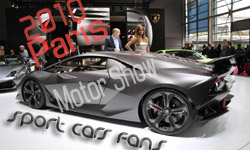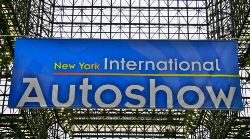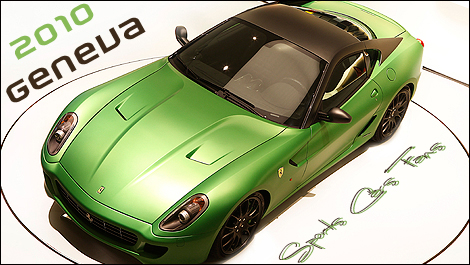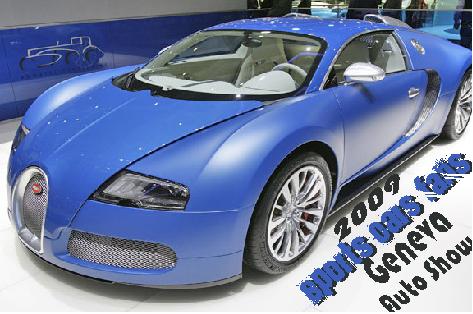Review: 2009 Lexus LX570

While the Lexus LX570 is the flagship SUV in the automaker's lineup, its glory is often overshadowed by the best-selling RX. With proven Land Cruiser bloodlines, and the Tundra's V8 muscle under its hood, the seven-passenger LX competes in the rarefied full-size luxury SUV segment occupied by the Land Rover Range Rover and Cadillac Escalade. What does the Japanese entrant hold over its British and American counterparts? And more importantly, what makes the LX unique in this segment?
A near clone to the venerable Toyota Land Cruiser, the first-generation Lexus LX 450 rolled into showrooms in 1996, differentiated by its luxurious passenger cabin, more compliant underpinnings, and Lexus emblems. While it was undeniably a true luxury SUV, its heavy-duty off-road Land Cruiser mechanicals (solid front and rear axles) meant the large-and-in-charge Lexus also offered go-anywhere capabilities with legendary Toyota quality and reliability to back it up. While it is hard to imagine today, there was only one other significant player in the segment back in 1996 – the Land Rover Range Rover. To its legendary British counterpart, the Lexus LX450 was a punch to the gut – even though the LX only offered an inline-six powerplant.
Lexus went to bat once more in 1998 with the introduction of the LX 470. Again, a thinly disguised Toyota Land Cruiser, the new LX addressed its power deficiency with a new 4.7-liter V8, suspension inadequacies with an independent front suspension, and a slew of new electronics and amenities designed to push it to the top of its class. The package worked, and the LX 470 graced Lexus showrooms through the 2007 model year.
Like all late-model Lexus vehicles, the LX570 is laden with technology – creating a busy soup of confusing acronyms. In the case of this massive SUV, the advanced electronic mechanization unquestionably improves the ride comfort, safety, and capabilities, but it comes at the cost of overall vehicle mass (the empty curb weight is... wait for it... 5,995 pounds). Loaded with automation, the LX570 isn't targeting traditional hardcore off-road enthusiasts.


A full-time four-wheel drive two-speed transfer case utilizes a Torsen limited-slip locking center differential to send 60% of the power to the rear wheels under normal driving conditions, with the front/rear bias automatically adjusted based on available grip. Electronic intervention is handled by Traction Control (TRAC) and Vehicle Stability Control (VSC). A new "Crawl Control" setup automatically manages throttle and brakes at very low speeds during serious off-road travel. The system can be set at one of three forward speeds (one in reverse) and works in conjunction with hill-start assist control (HAC) to keep everything – with the exception of steering – automated.
Generous four-piston calipers up front, clamping down on 13.4-inch rotors (13.6-inch in the rear), are supervised by an anti-lock brake system (ABS), electronic brake-force distribution (EBD) and brake assist (BA) to reduce the drama of bringing the three-ton SUV to a halt. As expected, Lexus engineers have calibrated the ABS to be effective on both dry pavement and off-road surfaces (where you may want a build-up of material to help slow a vehicle).




A coil spring double-wishbone up front and a four-link trailing-arm solid-axle in the rear offers nine inches of front wheel travel -- enough to roll over everything you'd find in your path following a bulldozer cutting a fire break. The rugged suspension features an Active Height Control (AHC) system to control ride height which works in conjunction with the Adaptive Variable Suspension (AVS) to maintain "posture control," according to Lexus. The standard wheel/tire package includes 20-inch alloys wrapped with 285/50R20 all-season rubber. Bolted to the axles of the LX570, the rubber fills the wheel wells nicely.
During our week-long stint, we took advantage of LX570's perceived cruise capabilities by loading up the entire family for a one-day 320-mile road trip from Los Angeles to San Diego and back. Spending the better part of six hours behind the wheel, with the wife and kids all sealed within the cabin, is an excellent crash-course in vehicle introduction.

Without a doubt, the LX570 is big – passengers have to climb aboard this full-size SUV. Thankfully, it is not a chore as the doors open wide and the truck is fitted with generous grab handles on all A- and B-pillars. Once inside, the cabin is all Lexus. Yards of soft perforated leather covers the seats and door panels. Wood and chrome accents surround smooth-faced buttons on the dash in a familiar manner. Comfort is the primary goal, and keeping with that mission our test model had four-zone climate control and heated seats at all four outboard positions. Overhead vents, like an aircraft, kept all three rows cool behind the factory tinted glass.
The Lexus will seat five very comfortably, seven if necessary. You won't put your best friends back there, but the hitchhikers you pick up will be sent to the rear military-inspired jump seats which automatically fold down from their stowed position against the walls. Thankfully, the seats face forward. It appears as if kids would be comfortable back there – ours were not. The floor isn't recessed (it's mostly flat), so third-row passengers find their knees uncomfortably high. In fact, the second row (and first row, for that matter) also lacks much of the foot well depth found on most modern unibody-type SUV platforms. The body-on-frame shortcoming is a sacrifice for off-road prowess, no doubt.




The LX570 offers commanding view, with excellent visibility out the front and the expected limited SUV-like sight lines to the sides and rear. Generous exterior mirrors (along with a reverse-camera) and a decent turning radius help during tight maneuvering. As far as visibility goes, one less-than-illuminating omission is the lack of HID headlamps. The folks in Japan refuse to fit them to the LX570, citing ride height/glare issues, so it makes due with projector-beam halogen lights that are downright lousy. Of course, we don't need to remind Lexus that everyone else in the segment offers xenon-based headlamps on their SUVs.
As it does in the Toyota Tundra, the brawny V8 lends an impressive amount of muscle to the LX570. Hardly underpowered, a stab of the gas pedal is met with a satisfying engine note and thrust that will move the luxury 'ute from a standstill to 60 MPH in just over seven seconds – even passing on the highway is confidence inspiring. The flip side is less-than-stellar fuel consumption. The LX570 burns fuel like a 747 burdened with the Space Shuttle on its back – with a similar stunted cruising range. We never had a chance to accurately measure economy in the city, but our highway cruising resulted in a hand-calculated average fuel burn of 17.56 MPG. Expect much less around town (the fuel economy computer barely hit double-digits).

All fuel consumption concerns evaporate once the LX570 leaves the pavement. That laundry list of electronic driving aids, coupled with good old-fashioned durable off-road components, allows the big Lexus to leave most of its competition behind when the going gets seriously rough. For lack of a better proving ground, but a genuine desire to try it out, we took the LX570 into a large unpaved area and ran it up and down several steep dirt hills to give "Crawl Control" a whirl. It makes a lot of noise (ABS sensors clacking), but it operates nearly flawlessly as advertised. Wheel travel is generous, even without resorting to lifting the car on its pneumatic suspension – accomplished via a quick toggle of a center-mounted switch. With AWD and locking differentials, you'd really need to pull a bonehead move to get the LX570 stuck.
Back on paved road, after the tires spit a few noisy pebbles into the wheel wells, the big Lexus SUV settles back into its serene demeanor once again. In a way, the LX570 operates much like a Presidential Secret Service agent: perfectly well-mannered, professionally cool and incredibly collected until called upon for severe duty in unexpected conditions. Like the men and women on POTUS detail, few LX570s will likely see such hazardous duty.

The full-size luxury-oriented SUV segment, once owned by the Range Rover, is far more crowded today. Land Rover is still peddling its Range Rover models, but the zooty competition includes the Cadillac Escalade, Lincoln Navigator, Infiniti QX, Mercedes-Benz M-Class and Audi Q7. Even the BMW X5 and Porsche Cayenne are pilfering sales. Nevertheless, compared to the others, the big Lexus does hold one significant trump card. Historically, LX models have proven mechanically durable over time – a point reinforced by their strong secondary market prices (the resale value of a decade-old LX is more double that of the Range Rover). That is an earned objective measurement.
While its adversaries maneuver, push and fight for their own slice of the pie, the Lexus LX570 seems rather unfazed by the others as it stoically holds it ground. It doesn't try to be the biggest, the fastest, the sportiest, the roomiest, or the most fuel-efficient – it simply continues to deliver its original message of traditional luxury, impeccable off-road capability, and award-winning reliability all wrapped up in one mammoth package.
Second Look: 2009 Lexus LX570
There's one thing that really sticks our craw about the Lexus LX570 - price. At a no-options, rock-bottom price of $76,405 (plus $875 in destination charges), it's $11,650 more than the all-but identical $64,755 Toyota Land Cruiser. That's an almost Yaris-sized premium for little more than superior cachet at the valet stand.
With no sheetmetal-level changes and minimal Lexus frosting on the exterior, the LX is as slab-sided and anonymous looking as its Toyota counterpart. Yes, it drives smoothly, is immensely capable, and will probably outlast the human race – no arguments here. But also lacks the visual panache of some of its rivals inside-and-out, and the gigantic pricing gulf between the LX and its more prosaic counterpart is even greater than it is with other Toyota-twinned Lexus models. This author's Costa Azul Mica tester was an eye-watering $88,660.
In order to really gain any real sort of differentiation inside, the LX intender must stump for the $3,090 Luxury Package that includes such niceties as the semi-anilene leather and African Bubinga wood trim. It's all quality stuff, but most of the controls have the same Toyota look and feel as found in a $25,000 Camry. It's all logical and easy-to-use, it just doesn't feel $75k+ special.
[Source: Autoblog]















